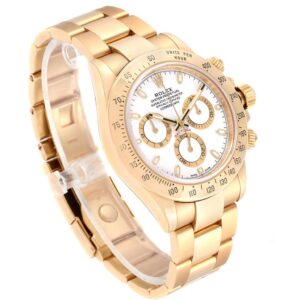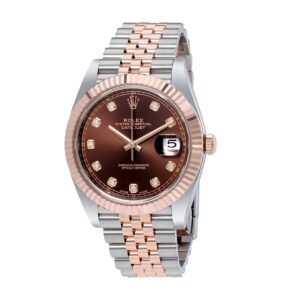
In an era where vintage Rolex collecting has ceded some spotlight to modern horology and independent makers, one icon quietly awaits rediscovery: the Rolex Cosmograph Daytona Oyster with the Paul Newman Panda dial. Once hailed as the pinnacle of chronograph design, this watch – revered for its stark black-and-white contrast and storied lineage – embodies a fading chapter in the annals of luxury watches. Yet as market tides shift, its understated elegance hints at an inevitable renaissance. 
While prices remain robust, the frenzy of yesteryear has cooled. Collectors now cast wider nets, exploring avant-garde independents or contemporary complications. But within this recalibration lies opportunity. The Panda Newman – a design once synonymous with “grail” – retains an almost mythic allure, its clean aesthetics and mechanical pedigree poised to captivate a new generation.
The Oyster-Cased Rolex Daytona
Produced between 1969 and 1985, references 6263 (black acrylic bezel) and 6265 (steel bezel) housed the coveted Panda dial. Yet true Newman variants emerged only during the first half of this span, with production ceasing around 1974. Over two decades of auction data reveal four distinct dial iterations – Mark 1 through Mark 2 – each bearing subtle typographic fingerprints.
The Mark 1, characterized by a truncated “kickstand” on the “R” of “ROLEX” and sans-serif “OYSTER,” epitomizes early simplicity. Later variants introduced nuanced flourishes: the Mark 1.5 blended the original’s minimalism with evolving serif details, while the rare Mark 1.75 bridged the gap to the Mark 2’s bold, serif-heavy text. Despite their technical labels, these distinctions hinge on meticulous details: the curvature of a letter’s stroke, the weight of a font. For connoisseurs, such minutiae separate the exceptional from the ordinary.
Market Dynamics: Rarity vs. Desire
Contrary to expectations, earlier isn’t always pricier. While Mark 1 dials anchor the Rolex Daytona‘s origins, only three of the top ten auction results belong to this cohort. Take two 2018 sales: Phillips’ “Daytona Ultimatum” auction featured a Ricciardi-linked 6263 (CHF 756,500), its caseback stamped with an earlier reference number – a quirk Rolex enthusiasts adore. Weeks later, Christie’s achieved CHF 730,460 for a Mark 1 with full provenance: box, papers, and a bank slip tracing ownership to its original buyer. Both watches thrived on narrative as much as craftsmanship. 
The Mark 2, however, reigns supreme in both volume and value. Its serifed text and tropicalized dials – sun-faded to caramel hues – ignite bidding wars. In 2021, a tropical Mark 2 with papers fetched CHF 1.004 million at Phillips Hong Kong, while a “Tiffany & Co.”-stamped variant commanded CHF 874,000 in 2016. Here, rarity intersects with romance: tropical patina whispers of decades past, while retailer stamps evoke exclusivity.
The Silent Revival
Between 2011 and 2021, vintage Rolex rode a cultural wave. Online forums and Instagram democratized horological knowledge, transforming niche obsessions into mainstream passions. Auctions became theater, with Rolex Daytonas as headliners. Yet as trends pivot, the Panda Newman’s fundamentals endure. Its Oyster case – a marvel of mid-century engineering – and legible dial remain untouched by time’s whims. 
Critics argue the model’s “flattening” market signals decline. But history suggests otherwise. The 6062 Moonphase and military Submariners weathered similar lulls before resurging as blue chips. For astute collectors, today’s softer prices offer entry points. After all, aesthetics seldom age: the interplay of glossy subdials against matte white, the heft of Millerighe pushers – these details transcend speculation.
As the horological world chases novelty, the Panda Newman lingers like a sonnet half-remembered. Its revival isn’t a matter of if, but when. For when design transcends trend, it earns permanence. And in the pantheon of watchmaking, few designs resonate as deeply as this monochrome masterpiece.